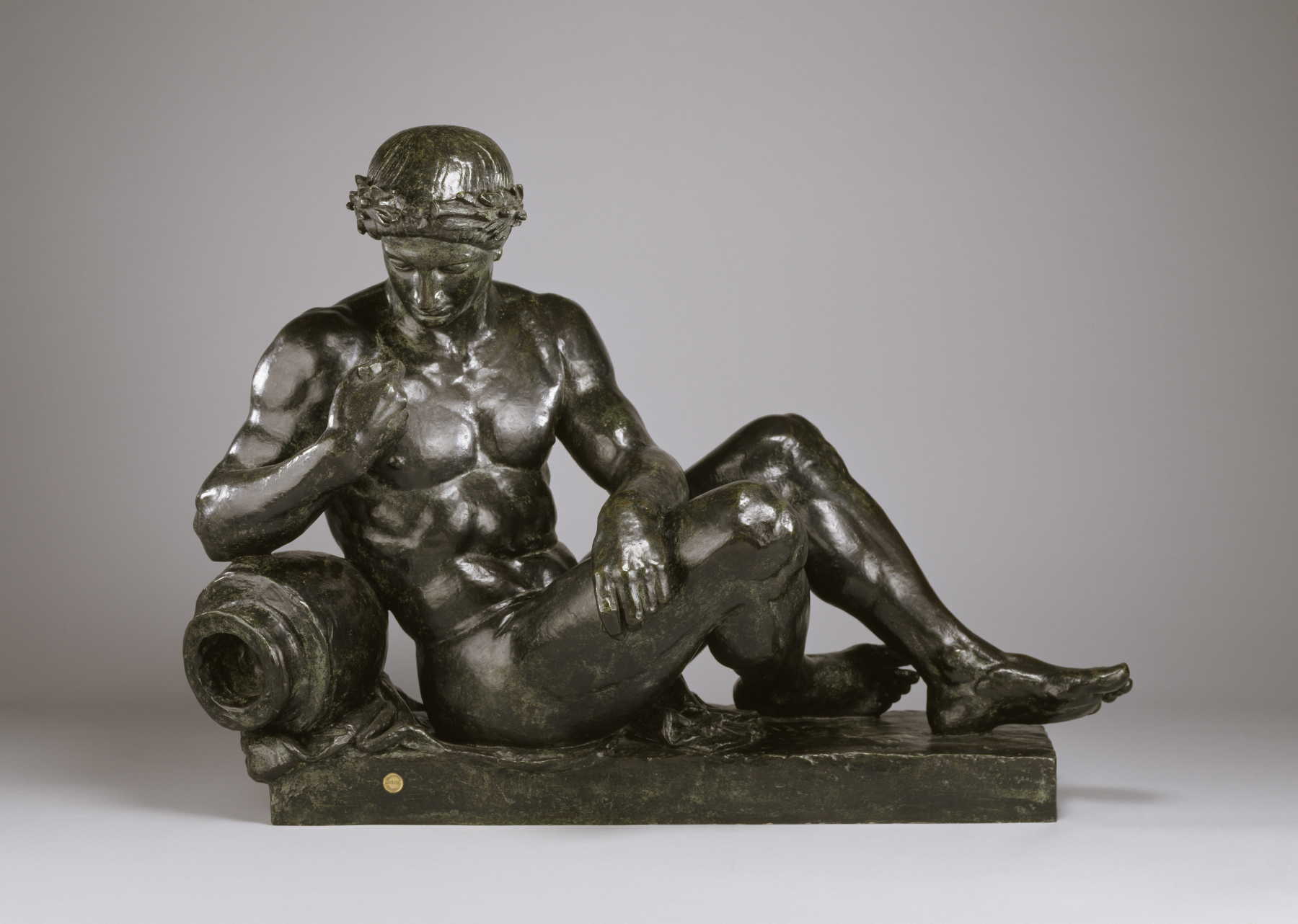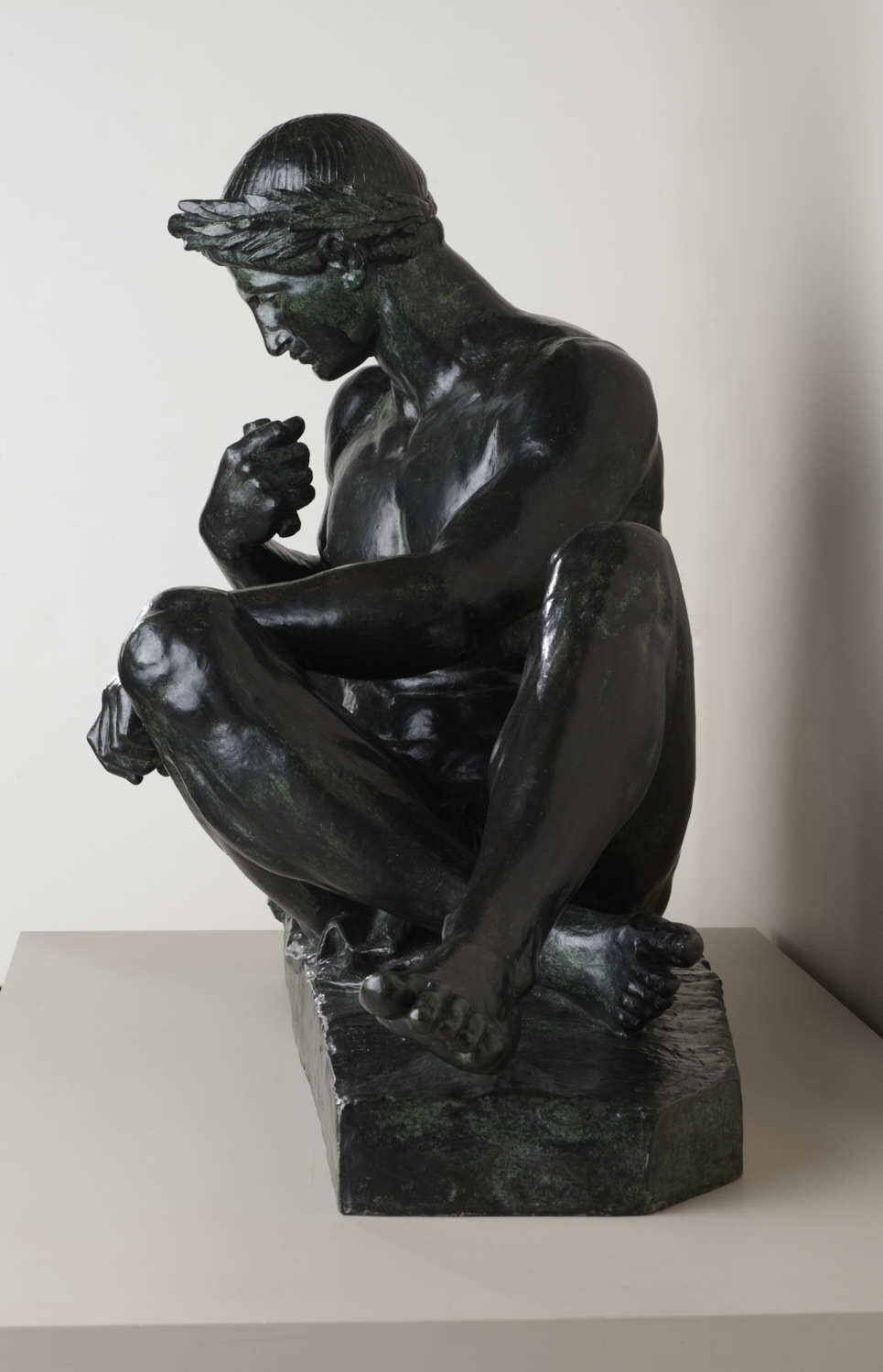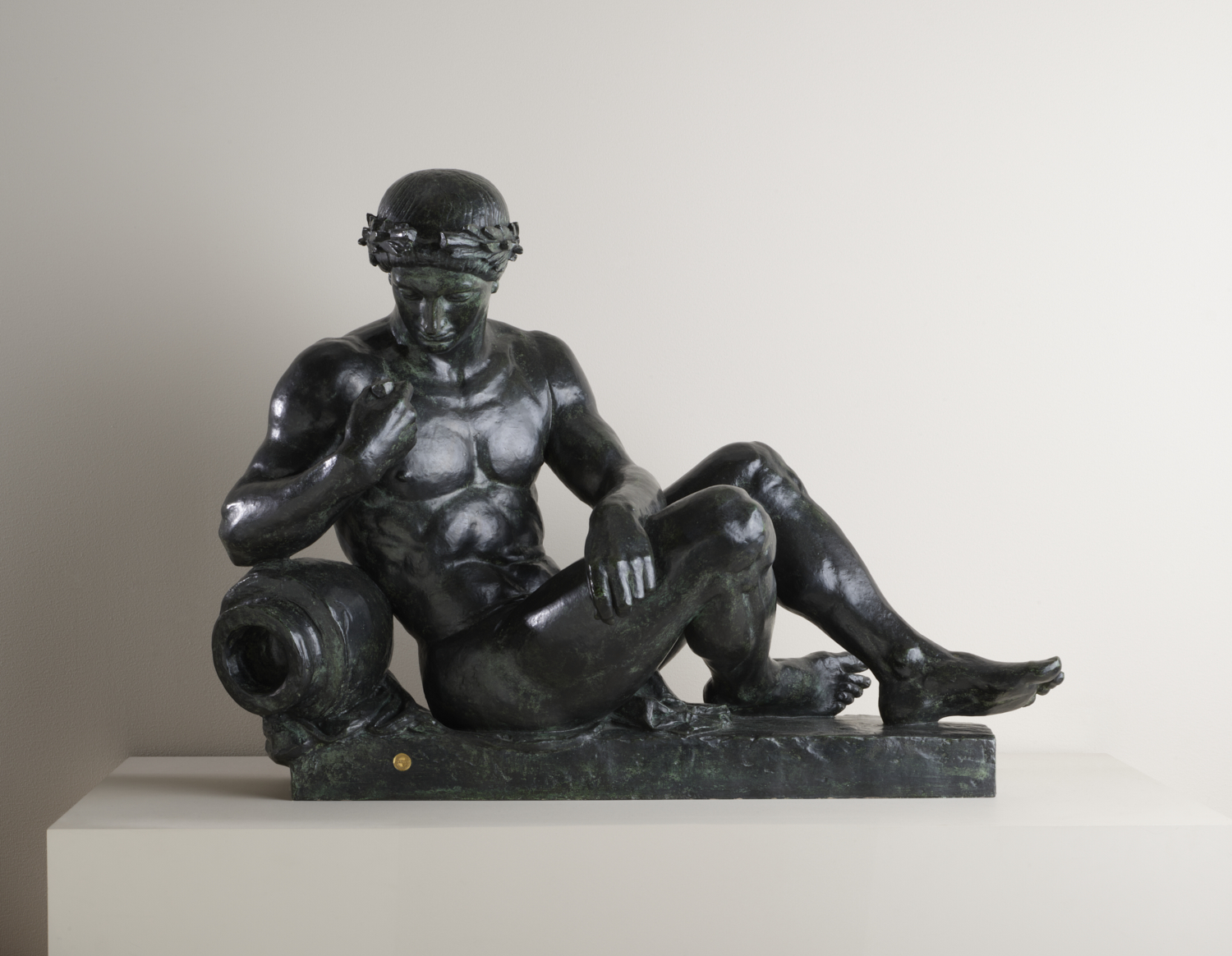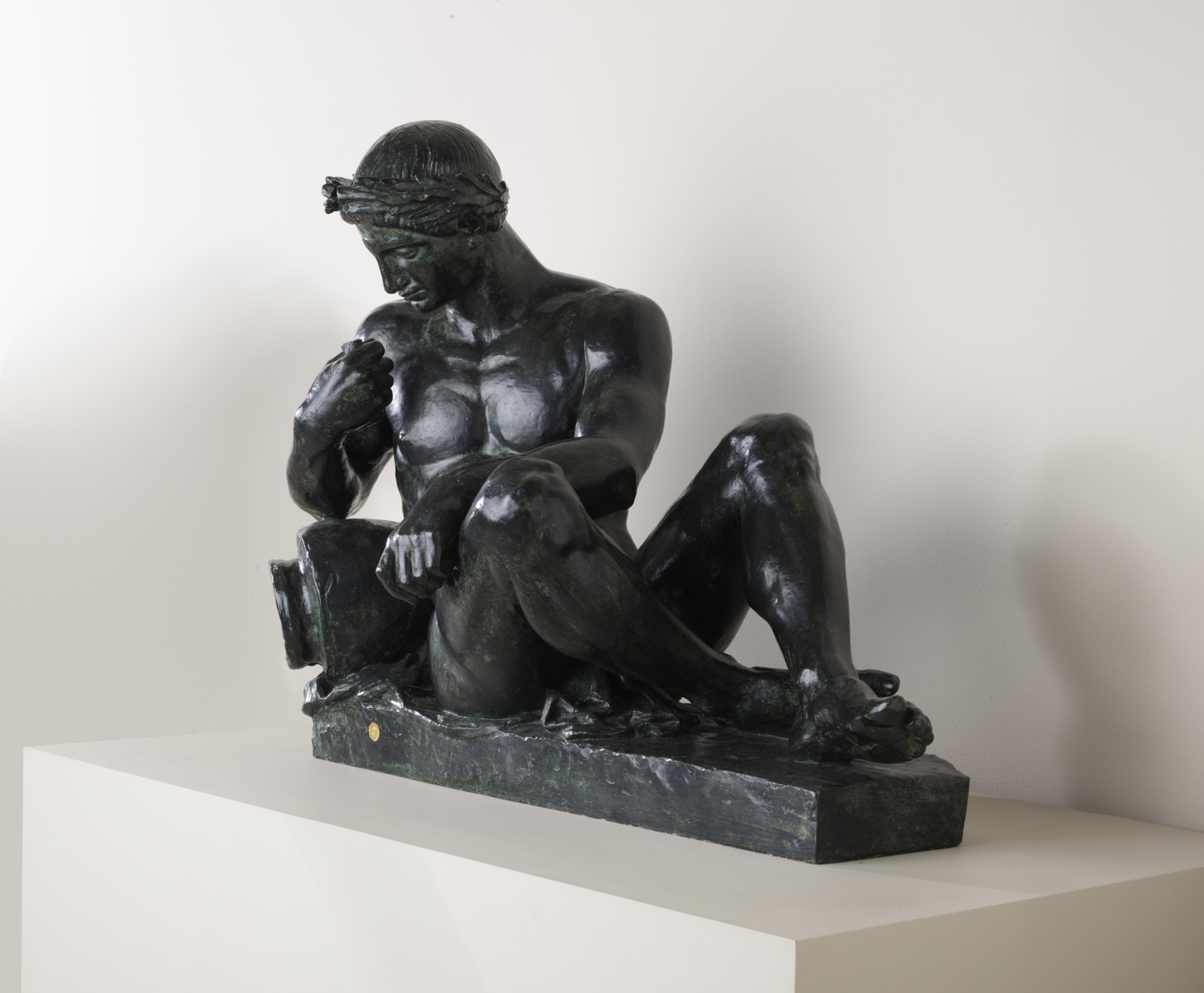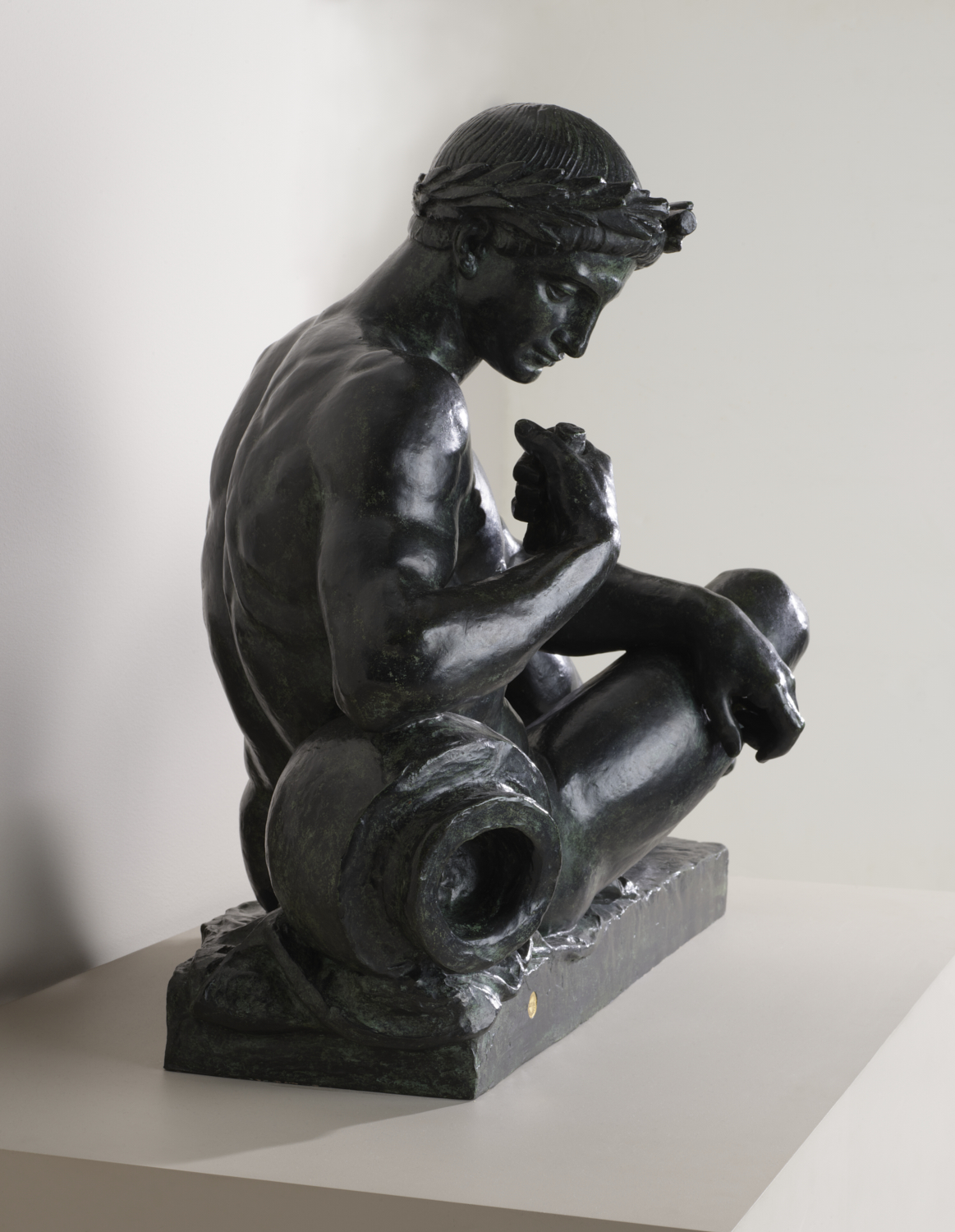The River God
(18th and 19th Centuries )
These bronzes (this one and Walters 27.182) are reductions of the stone sculptures that the architect Hector-Martin Lefuel (1810-80) commissioned in 1866 for the Carrousel entrance, a narrow, double passageway leading into the courtyard of the Louvre. Barye adhered to the ancient Roman tradition of showing nude male figures leaning against upturned water urns as symbols of rivers. These particular bronzes were cast by Ferdinand Barbedienne, who acquired the models at the artist's estate sale in 1876.
Originally, the "River Gods" flanked Barye's large relief of Napoleon III dressed as a Roman emperor and mounted on a horse. After the fall of Napoleon III in 1870, the relief was removed and replaced by Antonin Mercié's (1845-1916) allegorical sculpture "The Genius of the Arts."
Inscription
Provenance
Provenance (from the French provenir, 'to come from/forth') is the chronology of the ownership, custody, or location of a historical object. Learn more about provenance at the Walters.
Ferdinand Barbedienne; William T. Walters, Baltimore, September 1884, by purchase [George A. Lucas as agent]; Henry Walters, Baltimore, 1894, by inheritance; Walters Art Museum, 1931, by bequest.
Exhibitions
| 2014-2016 | From Rye to Raphael: The Walters Story. The Walters Art Museum, Baltimore. |
| 2007-2008 | Untamed: The Art of Antoine-Louis Barye. The Walters Art Museum, Baltimore; Philbrook Museum of Art, Tulsa; The Henry Morrison Flagler Museum, Palm Beach. |
Geographies
France, Paris (Place of Origin)
Measurements
H: 23 7/8 × W: 33 1/16 × D: 15 in. (60.7 × 84 × 38.1 cm)
Credit Line
Acquired by William T. Walters, 1884
Location in Museum
Hackerman House at 1 West Mount Vernon Place: First Floor: Parlor
Accession Number
In libraries, galleries, museums, and archives, an accession number is a unique identifier assigned to each object in the collection.
In libraries, galleries, museums, and archives, an accession number is a unique identifier assigned to each object in the collection.
27.181

